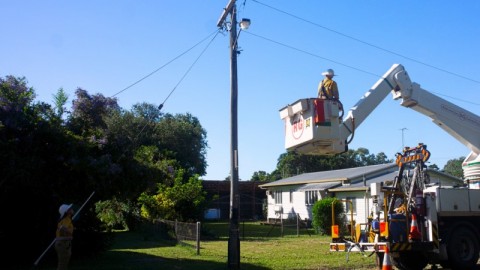A paper released by Infrastructure Australia is gaining traction in the water industry for its loud call for national urban water reform as utilities are set to come under increasing pressure from growth and climate change.
Reforming Urban Water: A national pathway for change addresses mounting challenges in the urban water industry, aims to provide a case for reform and outlines the potential costs of inaction. The report also establishes national objectives to guide reform and ensure the sector can meet future challenges, as well as identifies a pathway with clear recommendations.
Aging infrastructure
The urban water sector has a strong track record of providing clean and safe water to more than 20 million people. But the aging infrastructure which it relies on is costly to maintain and is being put under further strain by climate change and Australia’s growing and changing cities.
The report states: ‘Much of the urban water infrastructure that has served us well in the past is aging, or coming under increasing pressure from growing populations and a changing climate. Reform is required to ensure the sector can continue to provide safe, reliable and affordable services into the future.’
Infrastructure Australia Chief Executive, Philip Davies said, “If Australians want continued access to safe, reliable and affordable water in the future, we need to begin a staged approach to reforming the sector now — starting with a new national urban water reform plan.”
Increased water cost
Infrastructure Australia commissioned modelling to project how challenges facing urban water could affect household bills. The analysis was based on projections of future revenue requirements to manage future cost drivers.
The findings of the study indicate that, without appropriate action, a typical residential water and sewerage bill could rise by around $600 in today’s money over the next ten years.
This would see the average bill increase from $1,226 in 2017 to $1,827 in 2027. By 2040, the average bill could be as high as $2,553.
Three stage approach to water reform
Infrastructure Australia has recommended a three stage approach to reforming urban water:
- This first stage is for the Australian Government to establish a national reform pathway by the end of 2018, including agreeing to a new national urban water reform plan, establishing an independent national reform body and using incentive payments to drive reforms
- The second stage is to roll out nationally consistent reforms over the next five years. This includes refinements to regulation and governance in each state and territory, improvements to long-term planning and pricing frameworks, and enhanced collaboration between regulators
- The final stage is to consider further reforms over time, such as moving to a national regulator and privatising urban water assets
Mr Davies said that while reforms of this scale will take time to be rolled out, it is important that governments get on with the task of initiating reforms now.
“Across Australia many of our dams are relatively full, which gives us a rare window of opportunity for clear thinking and long-term planning to meet our future needs.”
Industry support
WSAA’s Executive Director, Adam Lovell, said, “WSAA supports the calls from Infrastructure Australia for a new national urban water reform plan and an independent national urban water reform body.”
“It is gratifying to see the strong and growing consensus around urban water reform that has developed between governments, water utilities and the private sector. The recommendations from Infrastructure Australia are in line with the reforms WSAA has been championing on behalf of the industry and its customers,” said Mr Lovell.
“With challenges including growth, climate change and affordability there is a clear burning platform for reform. Urban water reform has been neglected, and we now look forward to the Productivity Commission’s Final National Water Reform Report to kick-start action by all governments in 2018. Incentive payments to State and Territory Governments will be crucial to progress reform.”
TasWater Chairman, Miles Hampton, said it is clear that the best model for water and sewerage in Australia is for Government’s to regulate rather than own the utility – definitely not both.
“It also makes it perfectly clear that the pressures from growth and climate change are real, and that decisions about investment must be based on prudency and efficiency and tested by an independent regulator for sustainability and the best long-term interests of our customers,” Mr Hampton said.
While other forms of infrastructure have moved away from a system where governments own, regulate, and set policies, urban water has been left in the past.
“Now is the time for governments to get on with the job of bringing urban water policy, regulation and governance up to speed so that it can meet the changing needs of Australians in the twenty-first century,” Mr Davies said.














